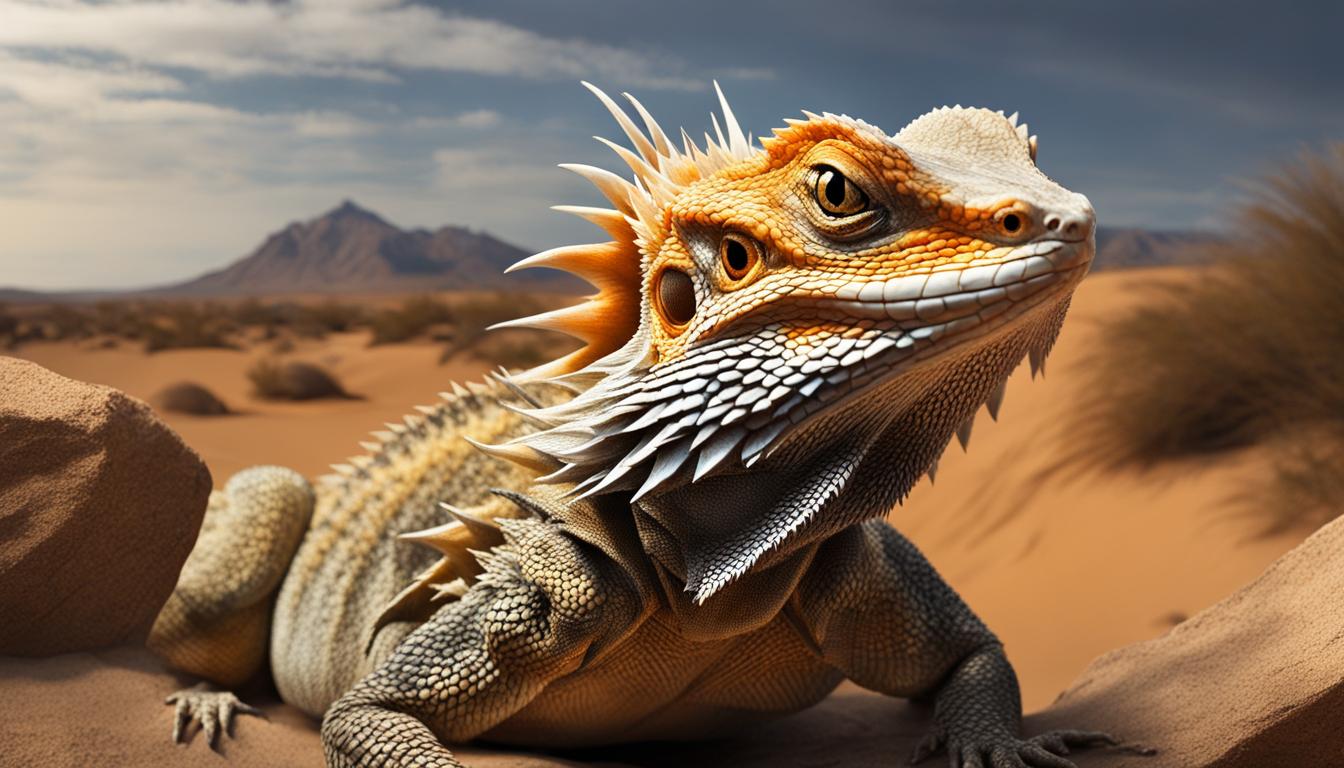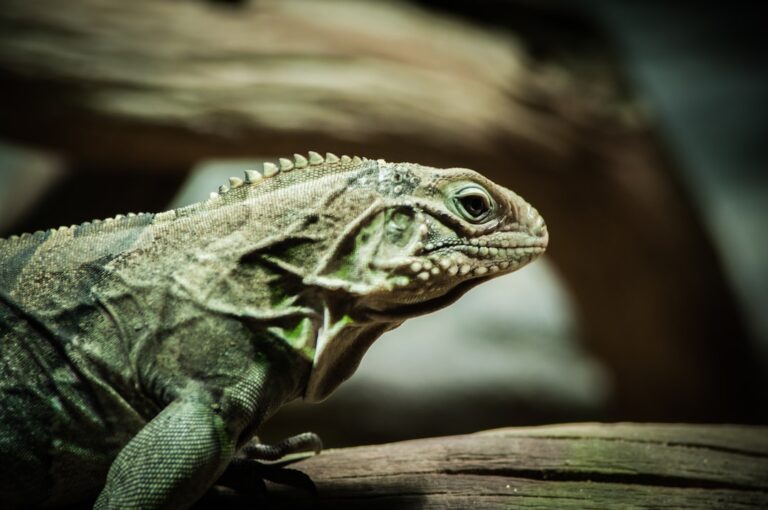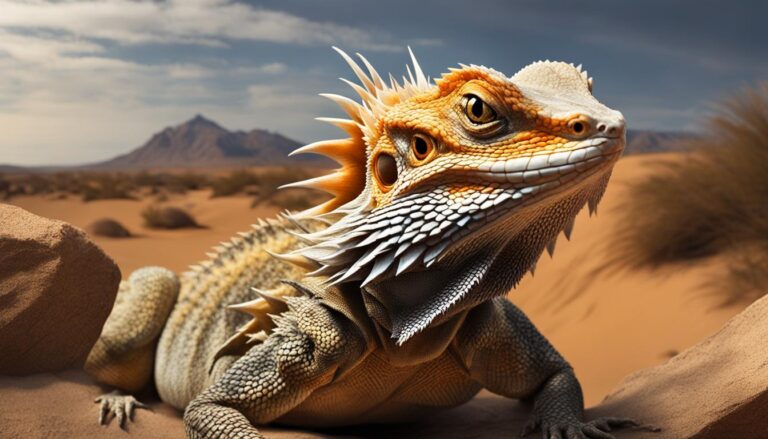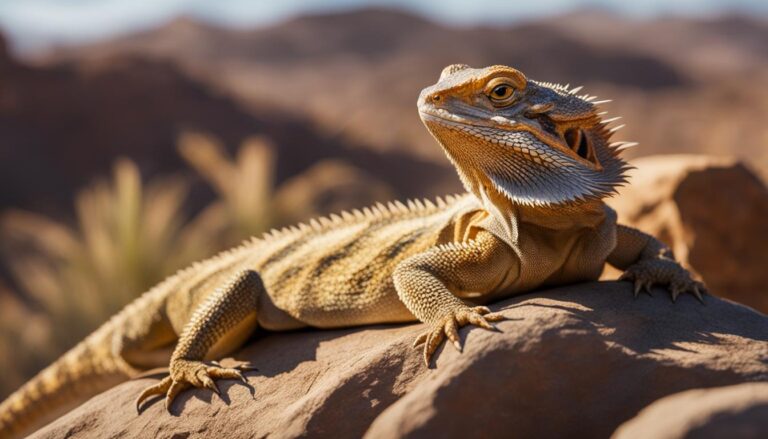Why Do Bearded Dragons Curl Their Tails?
Bearded dragons are popular reptile pets known for their docile nature and unique appearance. Native to Australia, these lizards have become increasingly popular as pets due to their manageable size and relatively low maintenance requirements. One of the most distinctive features of bearded dragons is their tail. The tail of a bearded dragon is long and slender, tapering to a point at the end. It serves several important functions for the lizard, including balance, communication, temperature regulation, defense, and courtship.
Table of Contents
The Function of the Bearded Dragon Tail
The tail of a bearded dragon plays a crucial role in its overall balance and movement. It acts as a counterbalance to the lizard’s body, allowing it to maintain stability while climbing, running, or jumping. The tail also helps the bearded dragon make quick turns and changes in direction. Without a properly functioning tail, a bearded dragon would struggle to navigate its environment effectively.
In addition to its role in balance and movement, the tail of a bearded dragon also serves as a storage site for fat and nutrients. Bearded dragons are known to store excess fat in their tails during times of plenty, such as after a large meal. This stored fat can then be used as an energy reserve during periods of food scarcity. The ability to store fat in the tail is an adaptation that allows bearded dragons to survive in their natural habitat, where food availability can vary.
The Role of Tail Curling in Bearded Dragon Communication
Bearded dragons use their tails as a means of communication with each other. Tail curling is a common behavior observed in these lizards, and it can convey various messages depending on the position and movement of the tail.
For example, when a bearded dragon curls its tail tightly against its body, it is often a sign of aggression or defensiveness. This is a defensive posture that the lizard adopts when it feels threatened or cornered. On the other hand, a relaxed and loosely curled tail is a sign of contentment and relaxation.
Bearded dragons also use their tails to communicate their dominance or submission to other members of their species. A dominant bearded dragon may hold its tail high and erect, while a submissive individual may tuck its tail between its legs.
The Connection Between Tail Curling and Temperature Regulation
Bearded dragons are ectothermic animals, meaning they rely on external sources of heat to regulate their body temperature. The tail of a bearded dragon plays a crucial role in this process. By positioning their tails in different ways, bearded dragons can effectively regulate their body temperature.
When a bearded dragon is too hot, it will often raise its tail up and away from its body to increase heat dissipation. This allows the lizard to cool down by exposing more surface area to the surrounding air. Conversely, when a bearded dragon is too cold, it will lower its tail closer to its body to conserve heat.
By observing the position of a bearded dragon’s tail, owners can get an indication of the lizard’s comfort level and whether adjustments need to be made to its environment.
The Relationship Between Tail Curling and Stress in Bearded Dragons
Stress can have a significant impact on a bearded dragon’s behavior, including its tail curling behavior. When a bearded dragon is stressed, it may exhibit abnormal tail curling patterns or positions.
Common stressors for bearded dragons include improper husbandry conditions, such as inadequate temperature or lighting, overcrowding, handling, or exposure to loud noises or sudden movements. It is important for owners to minimize these stressors and provide a calm and stable environment for their pet.
If a bearded dragon’s tail curling behavior changes suddenly or becomes consistently abnormal, it may be a sign of underlying stress or health issues. In such cases, it is advisable to consult a veterinarian who specializes in reptiles.
The Importance of Tail Curling in Bearded Dragon Courtship and Mating
Tail curling plays a crucial role in courtship displays and mating rituals among bearded dragons. Both males and females use their tails to signal their readiness to mate and to attract potential partners.
During courtship, male bearded dragons often perform a series of head-bobbing and arm-waving displays while simultaneously curling and uncurling their tails. This behavior is intended to attract the attention of females and establish dominance over rival males.
Females, on the other hand, may respond to these displays by raising their tails and presenting them to the male. This behavior indicates their receptiveness to mating.
Understanding the role of tail curling in courtship and mating can help owners recognize when their bearded dragons are ready to breed and provide appropriate conditions for successful reproduction.
The Impact of Diet and Nutrition on Bearded Dragon Tail Curling
Diet and nutrition play a significant role in a bearded dragon’s overall health and well-being, including its tail curling behavior. A balanced diet is essential for proper growth, development, and maintenance of the lizard’s body functions.
Bearded dragons are omnivorous, meaning they eat both plant matter and small insects. Their diet should consist of a variety of leafy greens, vegetables, fruits, and appropriately sized insects. Calcium supplementation is also important to prevent metabolic bone disease.
A lack of proper nutrition can lead to various health issues, including metabolic bone disease, which can affect the strength and flexibility of the tail. Inadequate calcium intake, for example, can result in weak bones that are more prone to fractures.
By providing a well-balanced diet that meets the nutritional needs of a bearded dragon, owners can ensure optimal health and proper tail curling behavior.
The Significance of Tail Curling in Bearded Dragon Defense Mechanisms
Bearded dragons have several defense mechanisms to protect themselves from predators or perceived threats. One of these mechanisms involves the use of their tails.
When a bearded dragon feels threatened, it may puff up its body and flatten its spines, making itself appear larger and more intimidating. At the same time, it may curl its tail tightly against its body or even wrap it around itself. This defensive posture is intended to make the lizard appear less vulnerable and more difficult to attack.
The position and movement of the tail can convey different defensive meanings. For example, a bearded dragon that flicks its tail rapidly from side to side may be warning potential predators to stay away. On the other hand, a bearded dragon that holds its tail still and curls it tightly against its body may be preparing to defend itself if necessary.
The Influence of Genetics on Bearded Dragon Tail Curling Behavior
Genetics can play a role in a bearded dragon’s tail curling behavior. Different individuals may have varying degrees of tail curling, ranging from tightly curled to loosely curled or even straight.
Breeders who specialize in bearded dragons often selectively breed for certain tail curling traits to produce offspring with desired characteristics. This can include breeding for tightly curled tails for aesthetic purposes or breeding for straighter tails for specific purposes, such as agility competitions.
It is important to note that while genetics can influence tail curling behavior, environmental factors also play a significant role. Proper husbandry, diet, and overall care are essential for ensuring healthy tail development in bearded dragons.
Tips for Understanding and Responding to Bearded Dragon Tail Curling
Understanding a bearded dragon’s tail curling behavior is crucial for owners to provide appropriate care and respond effectively to their pet’s needs. Here are some tips for interpreting and responding to different tail positions:
1. Relaxed and loosely curled tail: This is a sign of contentment and relaxation. It indicates that the bearded dragon is comfortable and at ease in its environment. Owners should continue providing a stable and stress-free environment for their pet.
2. Tightly curled tail: This is a defensive posture that the bearded dragon adopts when it feels threatened or cornered. Owners should avoid further stressing the lizard and give it space to calm down.
3. Erect tail: A bearded dragon that holds its tail high and erect may be displaying dominance or territorial behavior. Owners should monitor the situation to ensure that aggression does not escalate.
4. Tail flicking: Rapid tail flicking from side to side is often a warning sign that the bearded dragon is agitated or annoyed. Owners should avoid further provoking the lizard and give it time to calm down.
5. Tail held close to the body: When a bearded dragon tucks its tail tightly against its body, it may be preparing to defend itself if necessary. Owners should avoid handling the lizard in such situations to prevent stress or injury.
Conclusion:
The tail of a bearded dragon serves multiple important functions, including balance, communication, temperature regulation, defense, and courtship. Understanding and responding appropriately to a bearded dragon’s tail curling behavior is crucial for providing optimal care and ensuring the lizard’s overall health and well-being.
By observing the position and movement of a bearded dragon’s tail, owners can gain valuable insights into their pet’s comfort level, stress levels, readiness to mate, and overall health. Providing a suitable environment, balanced diet, and minimizing stressors are essential for maintaining healthy tail curling behavior in bearded dragons.
In conclusion, the tail of a bearded dragon is not just a decorative feature but an integral part of its anatomy and behavior. By paying attention to their pet’s tail curling behavior, owners can better understand and respond to their bearded dragon’s needs, ultimately enhancing the bond between them and ensuring the lizard’s overall well-being.
If you’re interested in reptiles and their fascinating behaviors, you might also enjoy reading the article “Why Do Iguanas Bob Their Heads?” This intriguing piece explores the curious head-bobbing behavior commonly observed in iguanas. Find out the reasons behind this unique movement and gain a deeper understanding of these captivating creatures. Check it out here.





